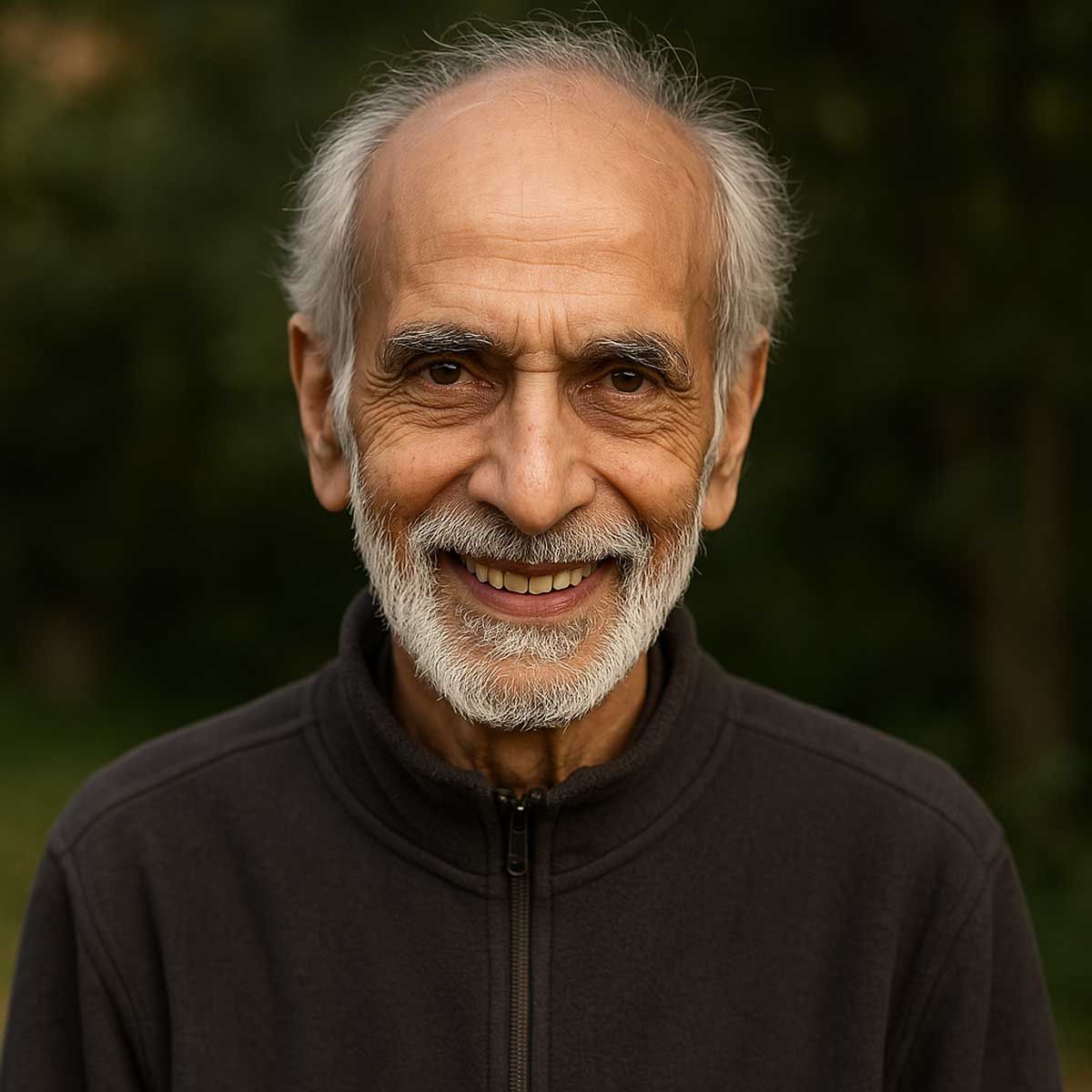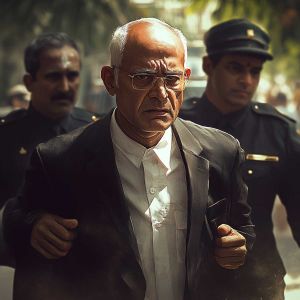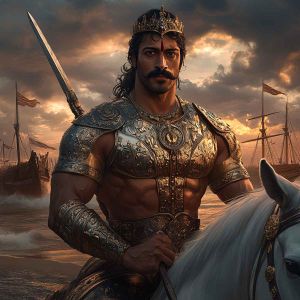Sanatan Articles
Satyaagrah
Written on
Satyaagrah
Written on
Satyaagrah
Written on
Satyaagrah
Written on
Satyaagrah
Written on
JOIN SATYAAGRAH SOCIAL MEDIA
"A horse gallops with his lungs, perseveres with his heart, and wins with his character”: Shubhrak seeing his master in danger became uncontrollable and threw Qutubuddin on the ground, stomped his chest and head with mighty hooves killing him on the spot

Indian history is filled with the chivalry of not only the kings, cavalry, or infantry but also the horses. Yes! Chetak is the one who gained immense respect for his loyalty to his master, Maharana Pratap. But Chetak is not the only example of a valiant animal serving his master. Shubhrak was another such horse that became synonymous with bravery, courage, and fearlessness.
|
Subhhrak (शुभ्रक) is a less-known loyal horse in Indian history. It was owned by Karna Singh, the King of Chittorgarh.
Quṭb al-Dīn Aibak also spelt Quṭb ud-Dīn Aibak or Qutub ud-Din Aybak (1150–1210 CE), was the founder of the Mamluk dynasty and the first sultan of the Delhi Sultanate.
He was born to Turkic parents in Turkistan. In his childhood, Aibak was sold as a slave and raised at Nishapur, Persia, where he was purchased by the local Qazi.
After the death of his master, he was sold by his master’s son and eventually became a slave of Muhammad of Ghor who made him the Amir-i-Akhur, the Master of Slaves.
He was appointed to military command and became an able general of Muhammad of Ghor.
The proponent of the Mamluk Dynasty of the Delhi Sultanate, Qutub-ud-din Aibak, and the slave of Muhammad Ghori established the dynasty after Ghori’s death. Although he ruled for only four years, many later scholars praised him for his generosity.
The Rawal king of Chittorgarh, Samar Singh, had two wives. His first wife, Prithabai, sister of Prithviraj Chauhan, had a son named Kalyan Rai. Rawal Samar Singh’s second wife was Kurma Devi, daughter of Nayaki Devi, a Solanki queen of Gujarat. She gave birth to Karn Singh.
She decided to be sati out of love for her husband. Kurmadevi, on the other hand, was filled with anger and a desire for vengeance. She also wanted to make sure that his son’s accession to the throne remained unrestrained.
|
Kurma Devi defeated Qutb-ud-din Aibak
Samar Singh was killed in the 2nd Battle Of Tarain (1191-92 AD) fought between the forces of Prithviraj Chauhan and Muhammad Ghori, who had returned to conquer India.
Both Samar Singh Deva and his eldest son, Kalyan Rai, died in the second battle of Tarain, and, when Prithabai received the news of her double loss, she immediately mounted the pyre to rejoin her husband. Kurma Devi would eventually follow her, but first she had unfinished business to tend to. She had to ensure that her son Karna seamlessly succeeded his father and that his seat on the throne of Chittorgarh was secure.
By this time Muhammad Ghori had retreated to Multan having left Qutub-ud-din Aibak, his chief general, in charge of Delhi and Ajayameru (Ajmer). During this time Kurma Devi consolidated her forces, forging new alliances with Rajput rulers of the neighborhood.
When his father Samar Singh died, Karna Singh was still a minor, around 12 years of age. The succession encountered no serious obstacles, and Kurma Devi became regent during the remaining year of her son’s minority. Inspired by the example set by her own mother, young Kurma Devi was an able ruler and re-strengthened her forces following the loss suffered in the 2nd Battle of Tarain.
When the boy king Karna reached his 13th birthday, she led the army and marched northward in search of the man who had killed her husband, in 1194 CE in the month of Asoj (Aswin) following Dassera, the traditional beginning of the warfare season. Nine rajas and eleven chiefs with the title of Rawat with their men accompanied her on her march towards Delhi.
As per the battle described in Prithvi Raj Raso, young Kurma Devi and her forces encountered Qutb-ud-din and his army near the old Amber fort.
At the head of her army, leading the charge herself, just like her mother, brave Kurma Devi drove deep into the ranks of Qutub-ud-din’s Army, deep enough for her to confront the general himself and to challenge him in a personal duel.
During the mounted duel, she managed to bury her sword deep into Qutb-ud-din’s flesh, wounding him so severely that he tumbled from the saddle.
Seeing their General fall, and his body being carried away from the fight and, consequently, believing him dead, the Muslim army went into complete disarray and fled from the battlefield.
Having believed She had killed Qutb-ud-din, and seeing his army fleeing the battlefield, Kurma Devi regrouped her army and led it back south.
Returning to Chittorgarh, she mounted the pyre and, like Prithabai.
|
Return of Qutbuddin Aibak
Qutb-ud-din did not die from his wounds. He eventually recovered and returned to Delhi, and subsequently declared himself not viceroy but Sultan of Hind.
He destroyed the temple of Vishnu, which also had Dhruv Sthambh or Vishnu Dhwaj. This was later named as Qutub Minar in Delhi.
With the capital at Delhi, Aibak subjugated areas between the Ganga and Yamuna rivers. He then turned his attention to the Rajputs who were still resisting Ghūrid domination. In 1195–1203 CE, he mounted campaigns against their strongholds, while his lieutenant Muhammad bin Bakhtiyar Khilji conquered Bihar and Bengal.
After Muhammad Ghori was killed by Prithviraj Chauhan. Aibak was the logical successor.
Technically he was still a slave but he quickly obtained manumission. He married the daughter of Taj al-Din Yildiz of Ghazna, one of the other principal claimants to succeed Muhammad of Ghor.
He attacked Mewar once again and captured Karna Singh (son of Kurma Devi). Along with the looted wealth and king, he also carried Karna Singh’s horse Subhrak to Lahore.
Subhrak in Sanskrit means one who is wearing symbols of Subha (good). Like women wearing bangles and anklets, this horse was wearing bracelets or anklets on its legs and it was a lucky horse.
After reaching Lahore, Karna Singh tried to escape but was caught again.
Qutubuddin ordered to behead of Karna Singh and to increase the disgrace, to play a Polo Match with the dead King’s head.
The next day, to witness the beheading, Qutubuddin arrived at the venue riding on the Subhrak horse.
Subhrak (Shubrak) instantly recognized his master Karna Singh and started crying. When he was freed of chains to cut his head, Subhrak suddenly became uncontrollable and threw Qutubuddin onto the ground.
Without allowing him to defend, Subhrak started hitting his chest and head area with his mighty hooves continuously. After 12–15 powerful hits by a horse, Qutubuddin Aibak died on the spot.
This incident is not covered in history written by detractors. They have written that Qutbuddin Aibak died after falling from a horse.
Which horse is it and how does a person, who has been riding horses since the age of 11, suddenly fall from a pet horse and die?
The entire gathering was shocked to see Aibak’s death at the hands of Subhrak.
Before the army tried to capture it, Subhrak ran towards its master Karna Singh, who mounted the horse and escaped.
For several days and nights, Subhrak ran and one day it came to the palace of Udaipur.
As soon as Karna Singh got down and began to greet his beloved horse, the horse appeared like a statue and had no life in it.
When Karna Singh touched its head, Subhrak fell to the ground, dead!
History of such a loyal horse was omitted in India, while ancient Persian books recorded how Aibak this incident.
|
A horse is better than a slave
The horse gave a sacrifice that was not ordinary. It not only saved his lord from execution but also ran until its last breath to the safest place possible. This was the perfect example of the Indian tradition of “swami-bhakti” (loyalty to the master). The best part is that while Aibak was a slave and a human, he succeeded his master by shedding blood, whereas Shubhrak was a horse that gave its life to save its master’s life while it was an animal.
Almost all historical texts mention Aibak’s death from a horse fall while playing Polo. However, it is hard to believe that someone who has ridden a horse since the age of 11 falls from the horse and dies on the spot. Comparing Qutub-ud-din Aibak with Shubhrak, we can actually understand that Indian horses were far braver and more loyal than the slaves from the sultanate. That is most likely why the courageous story of Shubhrak was hidden by contemporary Muslim writers.
References:
 Support Us
Support Us
Satyagraha was born from the heart of our land, with an undying aim to unveil the true essence of Bharat. It seeks to illuminate the hidden tales of our valiant freedom fighters and the rich chronicles that haven't yet sung their complete melody in the mainstream.
While platforms like NDTV and 'The Wire' effortlessly garner funds under the banner of safeguarding democracy, we at Satyagraha walk a different path. Our strength and resonance come from you. In this journey to weave a stronger Bharat, every little contribution amplifies our voice. Let's come together, contribute as you can, and champion the true spirit of our nation.
 |  |  |
| ICICI Bank of Satyaagrah | Razorpay Bank of Satyaagrah | PayPal Bank of Satyaagrah - For International Payments |
If all above doesn't work, then try the LINK below:
Please share the article on other platforms
DISCLAIMER: The author is solely responsible for the views expressed in this article. The author carries the responsibility for citing and/or licensing of images utilized within the text. The website also frequently uses non-commercial images for representational purposes only in line with the article. We are not responsible for the authenticity of such images. If some images have a copyright issue, we request the person/entity to contact us at satyaagrahindia@gmail.com and we will take the necessary actions to resolve the issue.
Related Articles
- Add Vedas and review freedom fighter's portrayal in School textbooks: Parliamentary Committee on Education
- Santi Ghosh and Suniti Choudhury: Two Teenage Freedom Fighters Assassinated British Magistrate
- Khudiram Bose - The symbol of valiance and death-defying youth, an orphan at 7 to hanging by the British at 18
- Bhagat Irwin Gandhi - Martyrdom of Shaheed Bhagat Singh (Some Hidden Facts)
- Martyrs’ march into the history - Rajguru: The Invincible Revolutionary
- "Tied to the cannon and blown to pieces couldn't deter his loyalty to Ettayapuram King and his devotion to the motherland stood sturdy and unshaken": Veeran Azhagumuthu Kone, Tamil Warrior who rebelled against Britishers 100 years before 1857 war
- "Nak-Kati-Rani": Defying Shah Jahan, Rani Karnavati of Garhwal inflicted unprecedented humiliation on the Mughal army, cutting off their noses; her invincible spirit remain unsung in mainstream history, overshadowing the grand tales of emperors
- Tonkham Borpatra Gohain: Ahom general who badly defeated Afghan forces killing Islamic commander Turbak Khan in 1533 CE, battle took place at Duimunisila along banks of mighty Bharali River
- Godse's speech and analysis of fanaticism of Gandhi: Hindus should never be angry against Muslims
- Taimur was attacked and defeated by 20 year old Rampyari Gurjar and her army of 40,000 women
- A Great man Beyond Criticism - Martyrdom of Shaheed Bhagat Singh (Some Hidden Facts)
- How Political ambitions of the Congress has silenced contributions of uncountable freedom fighters
- The Eki Movement of hero Motilal Tejawat whose last wish is still waiting to be fulfilled - 100 years of Palchitaria massacre in Gujarat and its cover-up by the British govt
- "समुद्रातळ शिवाजी": Behold mighty Kanhoji Angre, born 1669 in Harne, a fearless Maratha Navy hero ruling the Arabian Sea from Surat to Konkan with 80 ships, smashing British, Dutch, and Portuguese foes for 40 years, fortifying Vijayadurg and Alibag
- Unsung Heroine Pritilata Waddedar, Who Shook The British Raj at the age of 21





















